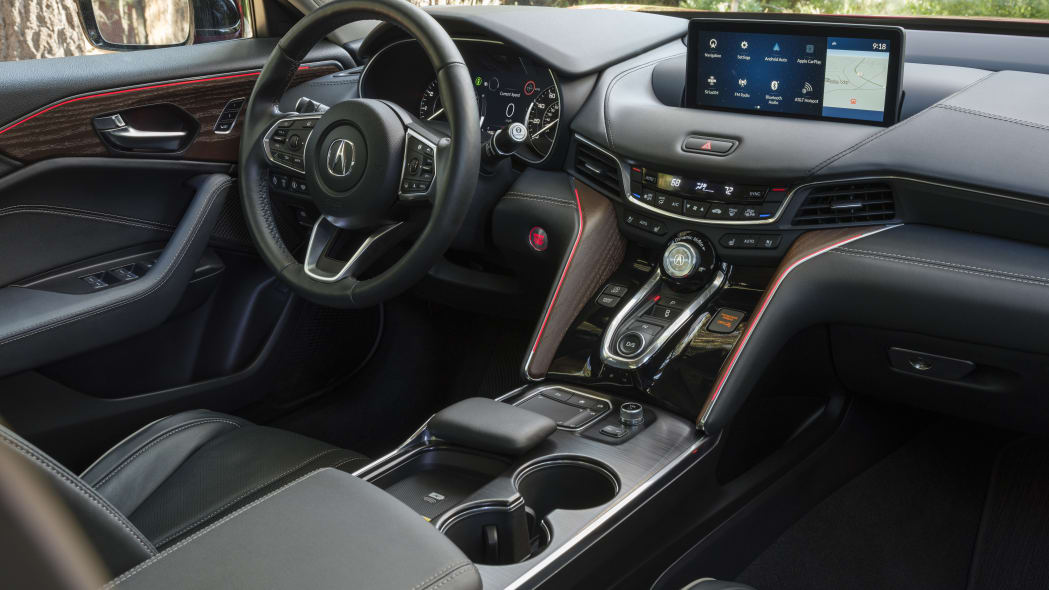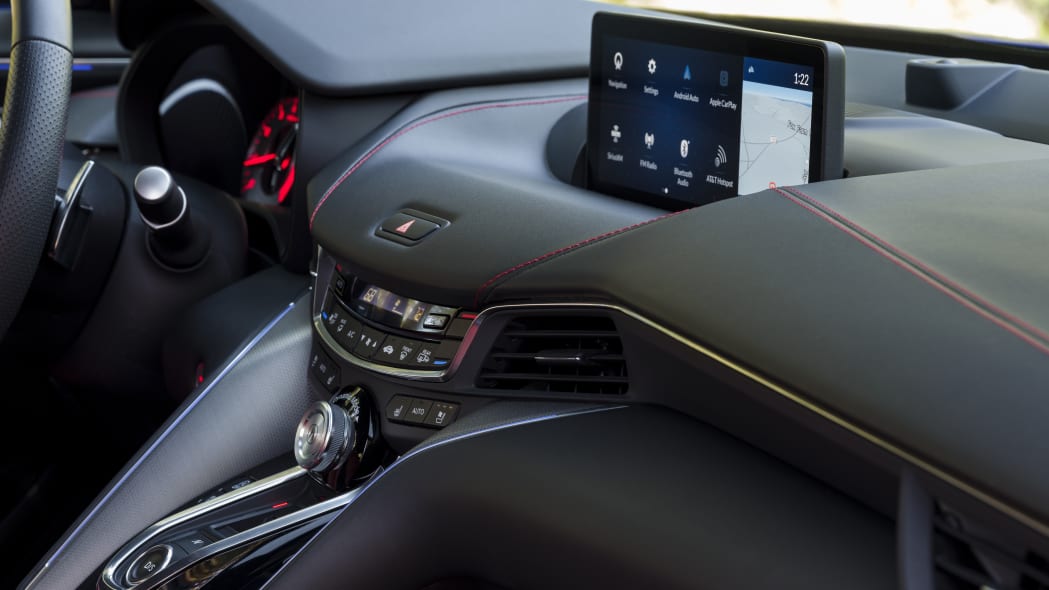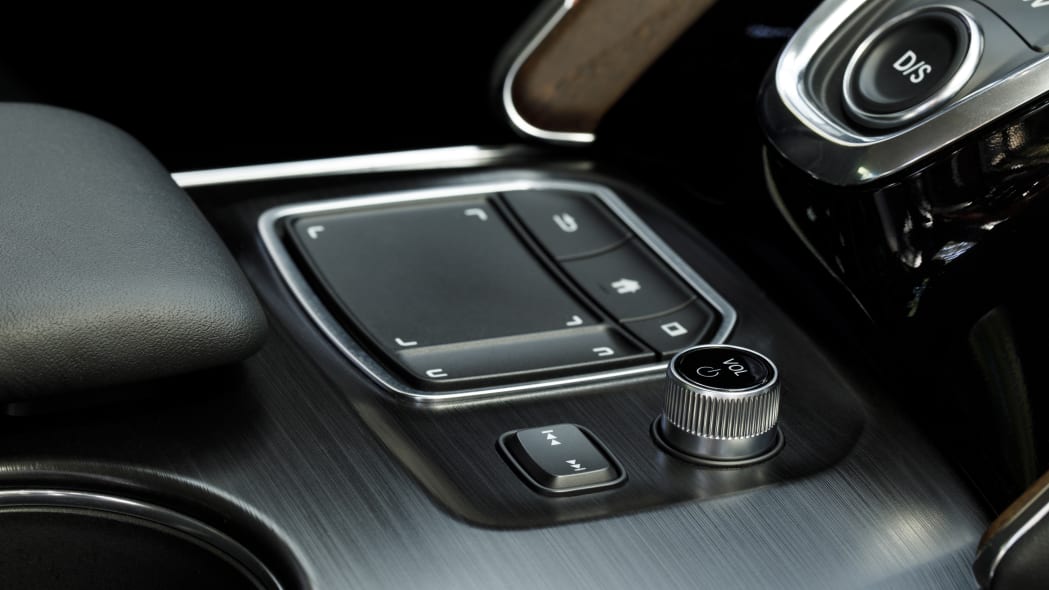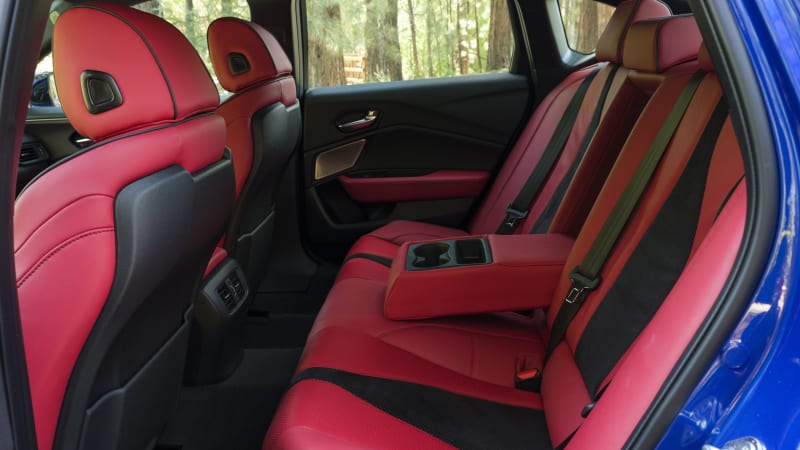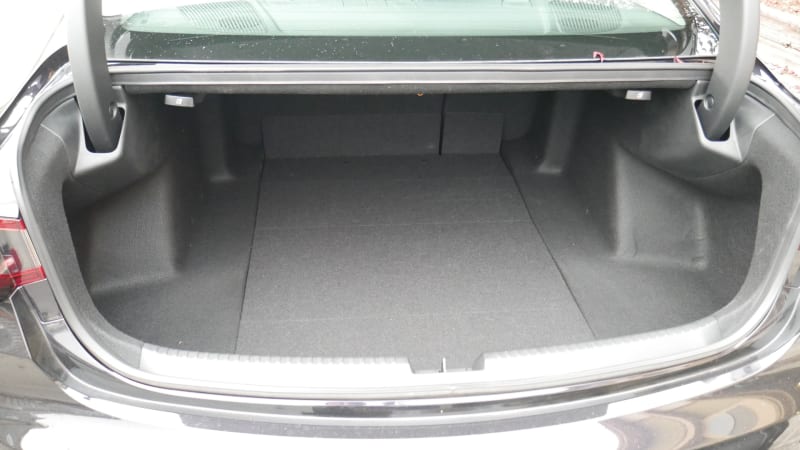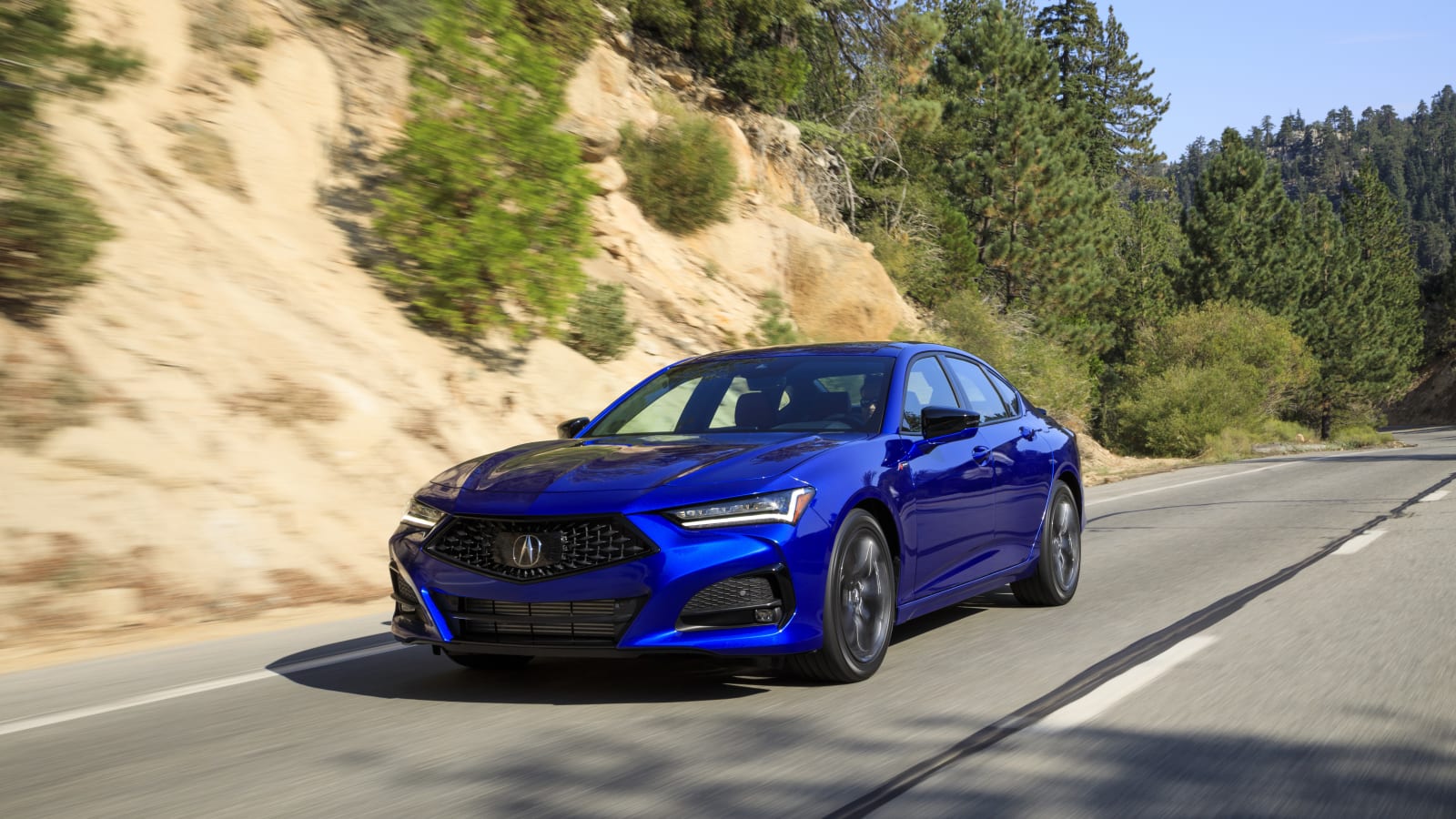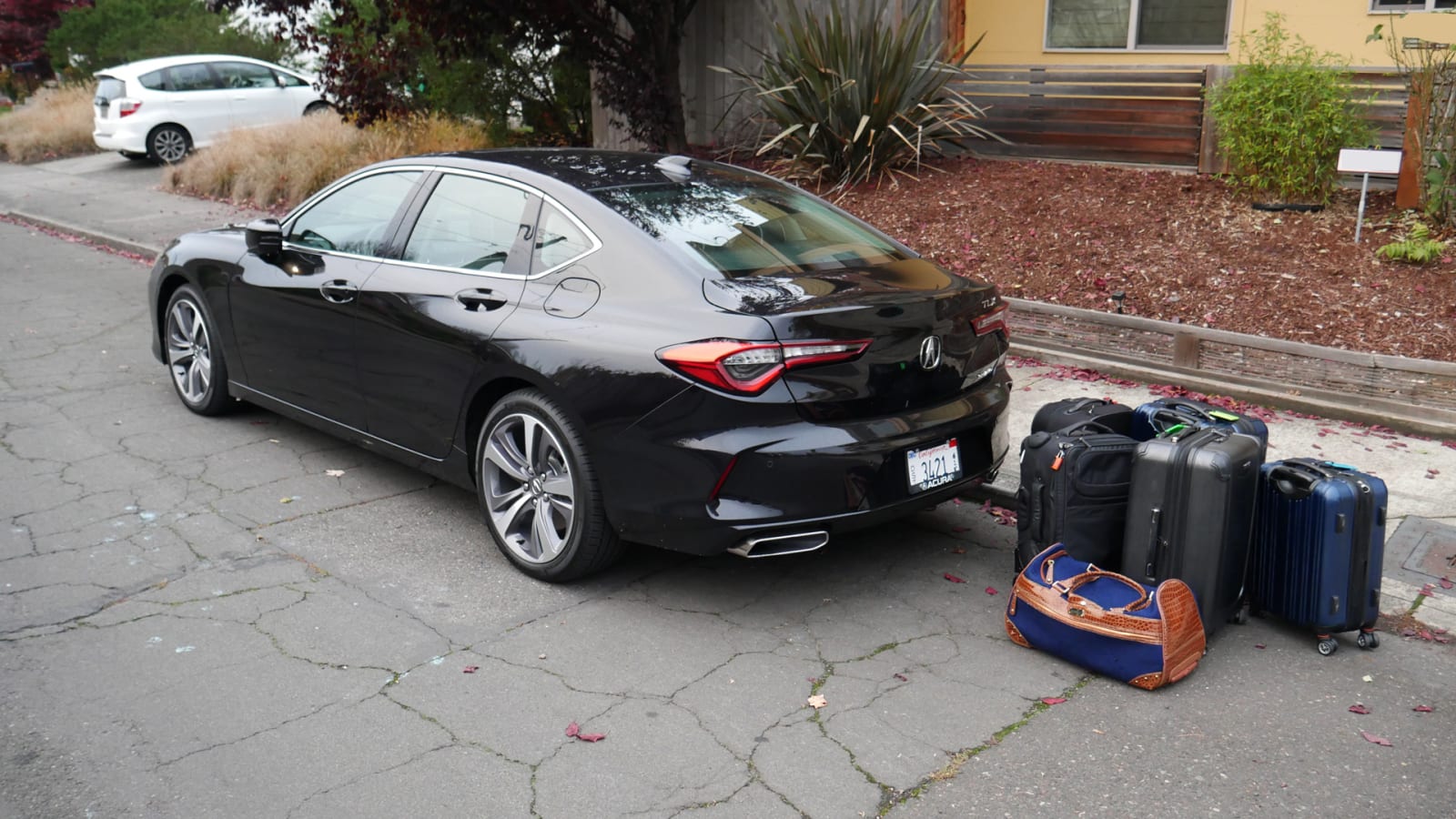The best-selling luxury car used to be an Acura. The brand’s combination of reliability, quality, design and driving dynamics clearly resonated with buyers. In the past decade-plus, however, those last two elements stopped resonating, while the Acura brand subsequently lost its luxury luster. Simply put, the 2021 Acura TLX is intended to turn things around. Its look is bold and athletic in a way not seen since the best-selling TL of the 2000s, while its long-hood/short-deck proportions are like no Acura that’s come before. Although they’re usually indicative of a rear-wheel-drive luxury sedan, the TLX remains based on a front-wheel-drive architecture with Acura’s brilliant Super Handling All-Wheel Drive system. A return to a double-wishbone front suspension ensures truly charismatic handling. That architecture is also unique to Acura as opposed to being related to the Honda Accord.
All of the above adds up to a new TLX that’s a far more compelling and competitive luxury sedan. If you’re considering a BMW 3 Series, Audi A4 or Mercedes-Benz C-Class, it’s definitely worth expanding beyond the German borders and giving Acura a try. It’s different to be sure, but different can be good, especially for driving enthusiasts who’ve seen some zest ooze out of the 3 Series in recent generations. Even its interior is suitably luxurious in quality and distinctive in appearance – it looks like nothing else out there and, importantly, doesn’t give off the vibe of an Accord in dress pants. While we’re not ready to declare it any sort of class leader, it’s worthy of playing with the big boys.
What’s new for 2021?
The TLX was completely redesigned for 2021.
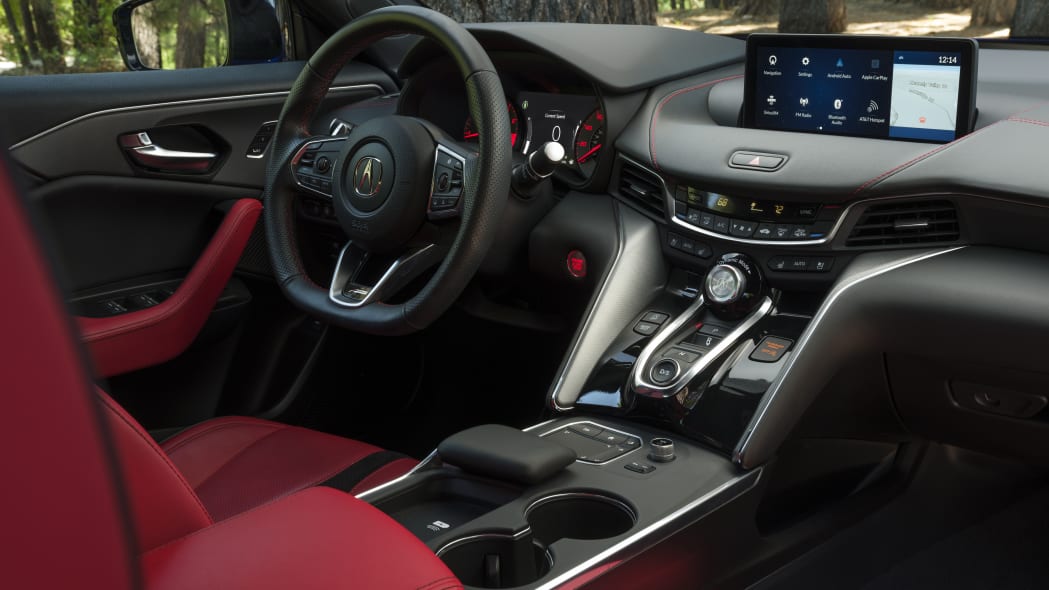
What’s the TLX interior and in-car technology like?
The TLX cabin has a modern, high-tech look that won’t be confused with something in a European luxury sedan. Materials quality is excellent, while padded simulated leather on the dash and doors provides an undeniable air of luxury. There are style differences between trim levels as well, most notably the open pore wood trim and ambient lighting in the Advance (above left) and the A-Spec’s sport gauges, unique aluminum trim and available red leather (above right). There’s still some switchgear shared with Honda – particularly the annoying push-button shifter – but at least Honda makes some nice switchgear.
There are notable, Acura-only exceptions to that. First is the large silver knob prominently placed on the center stack that controls the car’s driving modes. Considering most owners never change driving modes, this “hey look at me!” placement is more about Acura declaring that it’s serious about being a brand for car enthusiasts again than it’s for actual functionality.
The second would be Acura’s infotainment system. It consists of a large, widescreen display mounted high atop the downward-sloping dash. This placement makes it easier to keep your eyes on the road, but we’re not sold on its unique touchpad controller. Basically, the pad corresponds to the screen – if you touch the lower left corner, for instance, you engage whatever is in the screen’s lower left corner. This works in theory, but there are still too many errant presses, only four radio presets can appear at a time, and using Apple CarPlay basically turns the touchpad into a mouse-like controller not unlike Lexus‘ Remote Touch. And believe us, it’s never good to be compared to that infernal thing. In general, though, we think you can get used to this unusual infotainment system, especially since so few competitors have something that’s definitively better or at least simpler.
How big is the TLX?
On the outside, the TLX is roughly the same size as a midsize family sedan. Its length is basically within two inches of the shorter Toyota Camry and the longer Honda Accord. That makes it considerably bigger than its primary competitors from Europe … on the outside. Inside, it’s a different story as the dimensions say the TLX actually has a bit less legroom than a 3 Series, Audi A4 or Volvo S60. In practice, however, we were genuinely impressed with the amount of legroom back there and found that we could even mount a rear-facing infant seat without it coming close to the front seatbacks (and we had a 6-foot-3 driver). You can also mount that infant seat in the middle by “borrowing” the outboard seats’ inner LATCH anchors, which isn’t always possible.
Its 13.5-cubic-foot trunk is similarly less than what you’d find in a midsize mainstream sedan, but it’s also better than most of those luxury sedan competitors. In our luggage test, we were able to fit all six bags in the trunk.
What are the performance and fuel economy?
Every 2021 TLX comes with the same engine, a 2.0-liter turbocharged inline-four that produces 272 horsepower and 280 pound-feet of torque. That’s one of the largest standard outputs in the segment. A 10-speed automatic and front-wheel drive are standard, but every trim level (or “package” in Acura-speak) can be paired with the exceptional torque-vectoring all-wheel-drive system dubbed SH-AWD.
EPA-estimated fuel economy is 22 mpg city, 31 mpg highway and 25 mpg combined with FWD. Those decline slightly to 21/29/24 with AWD.


